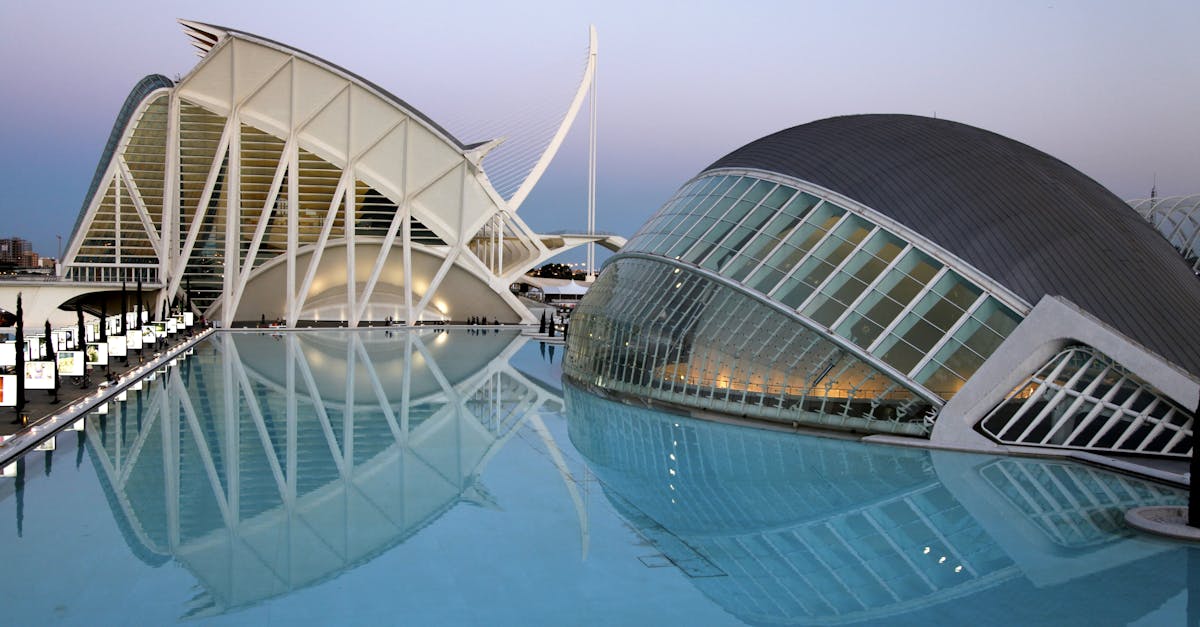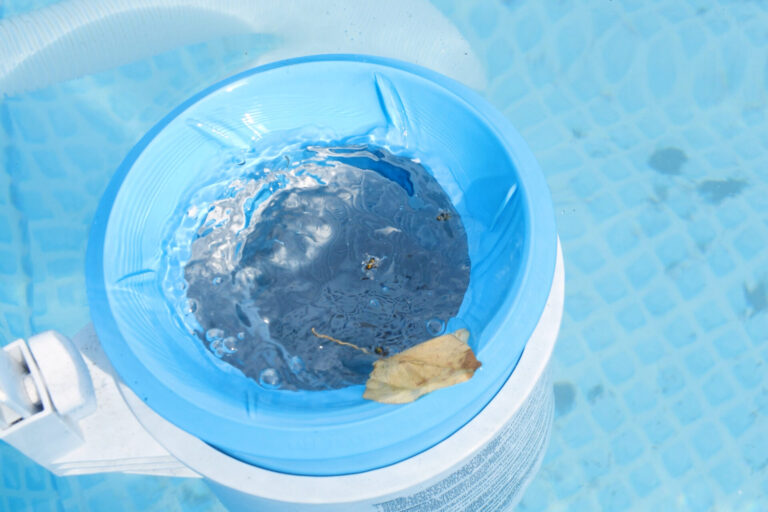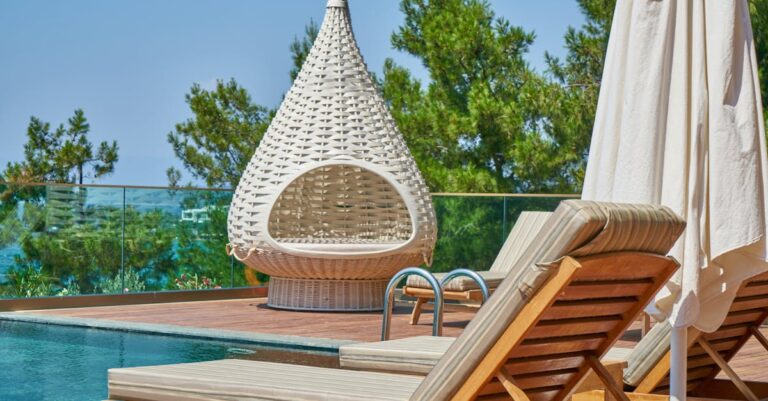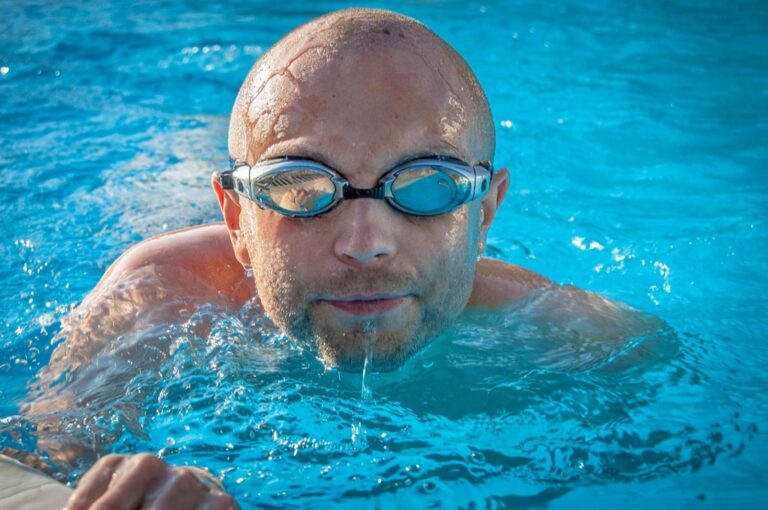7 Innovative Solutions for Pool Water Turnover Rates That Maximize Efficiency
Discover 7 cutting-edge solutions to optimize your pool’s water turnover rate, from variable-speed pumps to hydraulic floors, ensuring cleaner, safer swimming while reducing energy costs.
Maintaining proper pool water turnover rates is critical for keeping your swimming pool clean, safe, and compliant with health regulations. When water circulation is slow or inefficient, it creates opportunities for bacteria growth, cloudy water, and chemical imbalances that can be costly to fix. With technological advancements transforming the pool industry, innovative solutions now offer pool owners smarter ways to optimize water turnover without excessive energy consumption.
These breakthrough technologies and techniques aren’t just for commercial facilities—they’re becoming increasingly accessible for residential pools too. From variable-speed pumps to advanced hydraulic designs, you’ll discover options that can dramatically improve circulation while potentially reducing your operational costs.
Disclosure: As an Amazon Associate, this site earns from qualifying purchases. Thank you!
Understanding Pool Water Turnover Rates: Why They Matter for Water Quality
Pool water turnover rate refers to how long it takes for all the water in your pool to cycle through the filtration system once. This critical metric directly impacts water clarity, chemical efficiency, and swimmer safety. The industry standard recommends a complete turnover every 6-8 hours for residential pools and 4-6 hours for commercial facilities.
Proper turnover rates ensure uniform chemical distribution throughout your pool. When water circulates efficiently, chemicals like chlorine reach all areas evenly, preventing dead zones where bacteria and algae can thrive. A pool with inadequate turnover often develops cloudy water, algae blooms, and uneven chemical readings despite regular maintenance.
Health departments strictly regulate commercial pool turnover rates because poor circulation creates serious health risks. Stagnant areas become breeding grounds for harmful microorganisms like E. coli and Cryptosporidium that cause recreational water illnesses. Even residential pools require proper turnover to maintain the sanitizer levels needed to neutralize contaminants introduced by swimmers.
Your pool’s turnover rate directly affects filtration effectiveness. Even the best filter can’t remove contaminants from water that never reaches it. Faster turnover means more water passes through your filter, removing more debris, oils, and microscopic particles that compromise water quality and increase chemical demand.
1. Advanced Variable-Speed Pump Technology: Efficiency Meets Performance
Save energy and precisely control your pool's circulation with the AQUASTRONG Variable Speed Pool Pump. This powerful 2 HP pump offers customizable speeds and up to 80% energy savings, easily integrating with both in-ground and above-ground pools.
How Variable-Speed Pumps Optimize Circulation
Variable-speed pumps revolutionize pool water turnover by allowing precise flow rate adjustments throughout the day. Unlike single-speed pumps that operate at 100% or nothing, these intelligent systems can run at lower speeds for longer periods, creating more consistent circulation patterns. You’ll experience fewer dead zones and improved chemical distribution as water moves through your filtration system more uniformly.
Save energy and optimize pool performance with the AQUASTRONG Variable Speed Pool Pump. Customize speeds up to 8189 GPH and program up to 4 daily time periods for efficient filtration.
Energy Savings Without Sacrificing Turnover Rates
Variable-speed pumps deliver up to 90% energy savings compared to traditional pumps while maintaining optimal turnover rates. The physics is simple: running at half speed uses just one-eighth the energy of full speed operation. You’ll achieve the same daily water turnover by running these pumps longer at lower speeds, dramatically reducing your electricity costs while keeping water crystal clear and properly sanitized.
2. Strategic Multiple Return Systems: Revolutionizing Water Flow Patterns
Optimal Placement for Maximum Coverage
Strategic multiple return systems transform your pool’s circulation by positioning return jets at calculated intervals around the perimeter. Placing returns opposite the skimmer creates cross-flow patterns that eliminate dead zones where debris and bacteria collect. For optimal coverage, position returns at varying depths to create vertical circulation, ensuring chemicals reach every corner of your pool and maintaining consistent water temperature throughout.
Customizing Returns for Different Pool Shapes
Rectangular pools benefit from returns placed along the long sides to create a circular flow pattern that pushes water toward skimmers. For freeform or kidney-shaped pools, strategically angle returns to follow the contours and direct water toward filtration points. L-shaped pools require additional returns at junction points to prevent stagnation in corners. Custom-designed return systems can increase efficiency by up to 40% compared to standard setups.
3. Smart Pool Automation Systems: Precision Control for Perfect Turnover
Programmable Schedules Based on Pool Usage Patterns
Smart automation systems let you program turnover rates that align with your pool’s actual usage patterns. You can set higher circulation during peak swimming hours and reduce flow during off-hours. These systems learn over time, automatically adjusting to accommodate regular swim sessions, parties, or maintenance days without wasting energy on unnecessary circulation.
Real-Time Monitoring and Adjustment Capabilities
Advanced pool automation provides real-time water quality monitoring that automatically adjusts turnover rates based on current conditions. Your system can detect increased bather load and immediately boost circulation, or scale back during optimal conditions. Many systems offer smartphone integration, allowing you to monitor and adjust turnover rates remotely while tracking efficiency metrics for long-term optimization.
4. Hydraulic Floor Systems: The European Innovation Changing the Game
How Movable Floors Enhance Water Circulation
Hydraulic floor systems revolutionize pool water turnover by creating dynamic depth variations that generate constant water movement. As these adjustable floors change position, they create pressure differentials that naturally push water through circulation systems. This movement eliminates stagnant zones typically found in traditional pools, forcing water through filtration systems more effectively. The continuous motion prevents debris from settling, resulting in up to 30% improvement in overall circulation efficiency.
Dual-Purpose Design for Both Safety and Turnover
Movable floors deliver exceptional safety benefits while simultaneously optimizing water turnover rates. You can adjust pool depth based on user needs—shallow for children during the day, deeper for adult lap swimming later—with each transition creating a complete water mixing cycle. This functionality eliminates the need for separate pools while ensuring thorough chemical distribution throughout all water layers. The European design integrates seamlessly with existing filtration systems, typically improving turnover efficiency by 25-35% compared to static pool designs.
5. Skimmer Enhancements: Small Changes with Major Impact
Small modifications to your pool’s skimming system can dramatically improve water turnover efficiency without major renovations or equipment investments.
Advanced Weir Designs for Improved Surface Cleaning
Modern weir designs feature floating mechanisms that automatically adjust to changing water levels, capturing up to 30% more surface debris than traditional fixed weirs. These advanced designs maintain optimal water flow even during significant level fluctuations, preventing air intake that can damage pumps. Look for weirs with extended surface area and precision-engineered entry points that maximize the capture zone.
Integrated Pre-Filter Technology
Pre-filter baskets with multi-stage filtration technology can intercept debris before it reaches your main filter, reducing strain on your system and improving water flow by 15-25%. These innovative designs feature graduated mesh screens that capture particles of various sizes while maintaining consistent water flow. Many newer models include antimicrobial properties that prevent biofilm development in the basket itself.
Strategic Skimmer Placement Options
Placing additional skimmers at strategic points around your pool perimeter can eliminate dead zones and improve overall turnover efficiency by up to 40%. For rectangular pools, position skimmers along the length rather than width to optimize surface collection. Kidney-shaped or freeform pools benefit from skimmers installed at curves where debris naturally collects due to water movement patterns.
Automated Skimmer Vacuum Attachments
Vacuum-enhanced skimmer attachments create a powerful suction vortex that draws in water from a wider radius than standard skimmers, increasing the effective cleaning zone by 3-4 feet. These systems use venturi principles to amplify suction without additional power consumption. When integrated with your existing skimmer, these attachments can reduce turnover time by up to 20% while simultaneously improving debris collection.
6. Venturi-Based Circulation Boosters: Amplifying Flow Without Added Power
How Venturi Systems Create Additional Water Movement
Venturi-based circulation boosters leverage fluid dynamics principles to amplify water flow without requiring additional power. These ingenious devices create a pressure differential as water passes through a constricted section, generating a powerful suction effect that draws in surrounding water. The resulting enhanced circulation can improve turnover rates by 15-25% without increasing energy consumption. This passive technology effectively multiplies your existing pump’s circulation capacity while maintaining the same electrical footprint.
Strategic Placement for Maximum Efficiency
Positioning Venturi boosters at circulation dead zones transforms problematic areas into well-circulated water. Install units opposite to main return jets to create complementary cross-pool circulation patterns that eliminate stagnant corners. For optimal results, place boosters at mid-depth levels where they can influence both surface and bottom water layers. Strategic installation in larger pools may require 3-4 units spaced evenly to achieve comprehensive circulation, significantly reducing turnover times while maintaining existing power usage.
7. UV and Ozone Integration: Complementing Turnover with Advanced Sanitation
UV and ozone systems work synergistically with proper turnover rates to revolutionize pool sanitation while reducing chemical dependency. These advanced technologies provide supplementary disinfection that enhances water quality beyond what circulation alone can achieve.
Reducing Chemical Dependency Through Better Circulation
UV and ozone systems can slash chlorine requirements by 50-75% when paired with optimized turnover rates. The combination creates a powerful one-two punch: efficient circulation delivers water to the sanitizing systems, while UV/ozone neutralizes pathogens that might survive traditional filtration. This integration maintains protection against contaminants while dramatically decreasing chloramine levels and chemical costs.
Synergistic Effects on Water Quality and Clarity
Integrated UV/ozone systems improve water clarity by up to 60% compared to circulation alone. When water circulates efficiently through these systems, microparticulates that would normally escape filtration are oxidized or deactivated. The result is exceptionally clear water with reduced chemical odors and enhanced sparkle that’s immediately noticeable to swimmers, all while maintaining ideal turnover efficiency.
Implementing the Right Solution: Factors to Consider for Your Pool
Optimizing your pool’s turnover rate doesn’t require implementing all seven solutions at once. Start by assessing your current system’s performance and identifying specific circulation challenges in your pool. Consider your budget constraints alongside long-term energy savings when exploring variable-speed pumps or automation systems.
Pool size shape and usage patterns will determine which innovations offer the best return on investment for your situation. Many of these solutions can be implemented incrementally allowing you to improve circulation without overwhelming costs.
Remember that proper water turnover is about more than just meeting minimum standards—it’s about creating a healthier safer swimming environment. By embracing these innovative approaches you’ll enjoy clearer water reduced chemical usage and ultimately a more enjoyable pool experience for years to come.
Frequently Asked Questions
What is a pool water turnover rate?
Pool water turnover rate refers to the time it takes for all the water in your pool to pass through the filtration system once. Industry standards recommend complete turnover every 6-8 hours for residential pools and 4-6 hours for commercial pools. This circulation is essential for maintaining proper chemical distribution and water clarity.
Why is proper water turnover important for pool maintenance?
Proper water turnover ensures uniform chemical distribution throughout your pool, preventing algae growth and cloudy water. It helps maintain balanced sanitizer levels, reduces the risk of bacteria and pathogen growth, and improves overall filtration effectiveness. Without adequate turnover, pools develop dead zones where contaminants can accumulate.
How do variable-speed pumps improve water turnover?
Variable-speed pumps allow precise flow rate adjustments throughout the day, creating more consistent circulation patterns than traditional single-speed pumps. They can operate at lower speeds for longer periods, improving chemical distribution while using up to 90% less energy. This technology maintains optimal turnover rates while significantly reducing electricity costs.
What are strategic multiple return systems?
Strategic multiple return systems position jets at calculated intervals around the pool to create cross-flow patterns that eliminate dead zones. These systems place returns at varying depths for vertical circulation and customize positioning based on pool shape. Custom-designed return systems can increase circulation efficiency by up to 40% compared to standard setups.
How do smart pool automation systems optimize turnover rates?
Smart pool automation systems program turnover rates based on actual usage patterns, increasing circulation during peak hours and reducing flow during off-times. These systems learn to adjust automatically for regular swim sessions and maintenance days while offering real-time water quality monitoring. Many include smartphone integration for remote adjustments and efficiency tracking.
What are hydraulic floor systems and how do they enhance circulation?
Hydraulic floor systems are adjustable pool floors that create dynamic depth variations, generating constant water movement that eliminates stagnant zones. This European innovation improves circulation efficiency by up to 30% while allowing depth adjustments for safety. The technology ensures thorough chemical distribution throughout all water layers and typically improves turnover efficiency by 25-35%.
How can skimmer enhancements improve water turnover?
Advanced skimmer enhancements include improved weir designs that capture 30% more debris, integrated pre-filter technology that reduces strain on main filters, and strategic placement of additional skimmers to eliminate dead zones. Automated skimmer vacuum attachments create powerful suction vortexes that increase cleaning zones and can reduce turnover time by up to 20%.
What are Venturi-based circulation boosters?
Venturi-based circulation boosters use fluid dynamics principles to enhance water flow without additional power consumption. They create pressure differentials that amplify circulation, improving turnover rates by 15-25%. When strategically placed in circulation dead zones, these boosters transform stagnant areas into well-circulated water while maintaining existing energy usage.
How do UV and ozone systems work with proper turnover rates?
UV and ozone systems work synergistically with optimal turnover rates to enhance pool sanitation while reducing chemical dependency. These technologies can cut chlorine requirements by 50-75% when paired with efficient circulation. The combination provides effective disinfection and improves water clarity by up to 60%, resulting in clearer water with fewer chemical odors.
What turnover rates are required for commercial pools?
Commercial pools typically require turnover rates of 4-6 hours, faster than the 6-8 hours recommended for residential pools. These rates are strictly regulated by health departments due to higher bather loads and associated health risks. Commercial facilities must maintain proper documentation of turnover rates to demonstrate compliance with local health codes.






